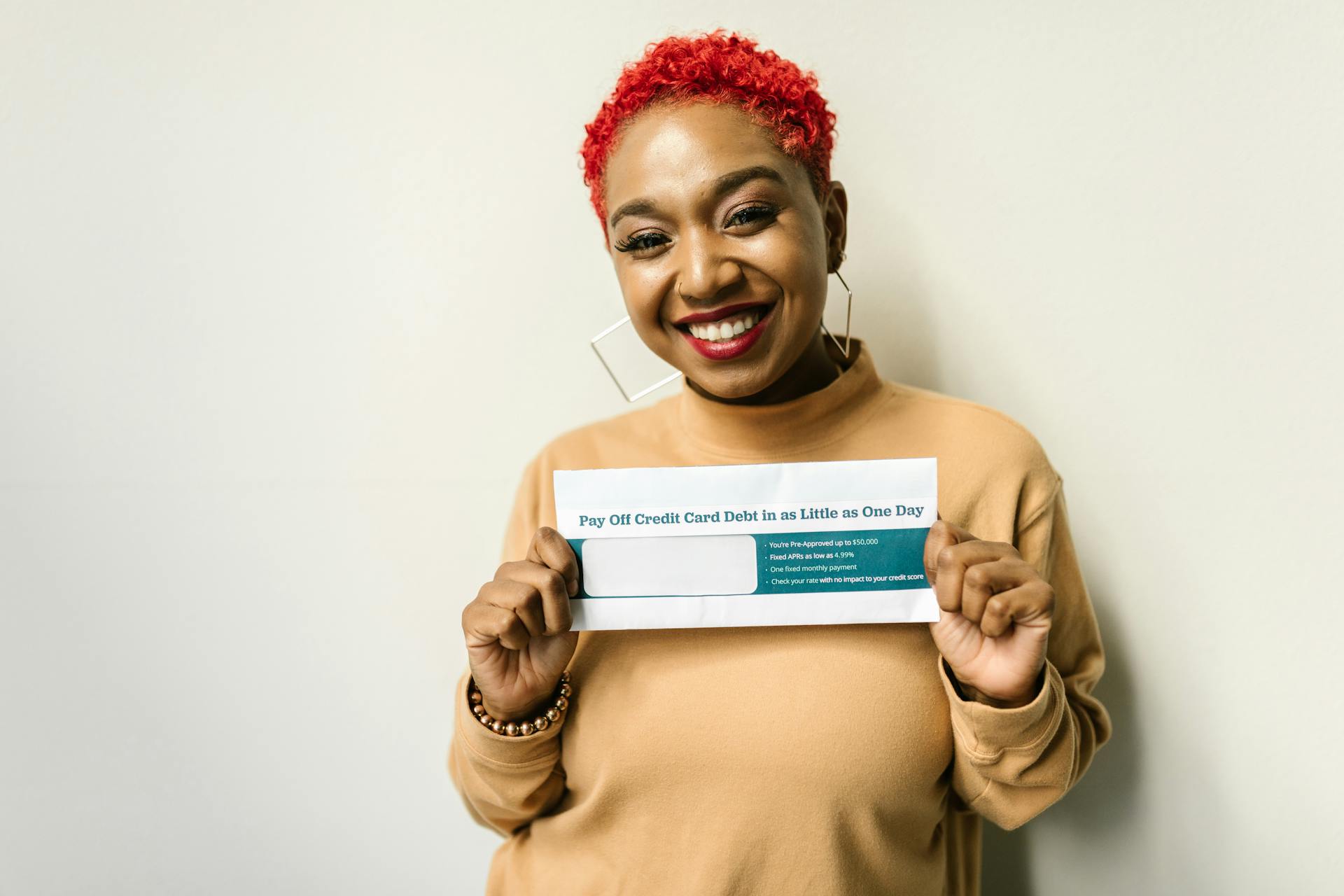
Consolidating your retirement accounts can be a game-changer for your financial future. By rolling over your IRA accounts into one, you can simplify your finances and potentially lower your fees.
Consolidating your IRAs can also help you keep track of your investments more easily. This is especially important if you have multiple accounts spread across different institutions.
Having all your retirement funds in one place can make it easier to manage your investments and make informed decisions about your financial future.
Recommended read: Best Retirement Portfolio for 65-year-old
Before Rolling Over
Before rolling over your Empower 401(k) to an IRA, it's essential to consider the tax implications. Rolling over company stock can have negative tax implications.
You should also be aware that you can't borrow against an IRA as you can with a 401(k), and you may face higher investing fees, pricing, and expenses than you did with your 401(k).
Here are some key factors to consider before rolling over:
Leave Money in Former Employer's Plan (If Permitted)
If your former employer permits it, you have the option to leave your money in their plan. This means you don't have to make an immediate decision about where to move your savings.
Your account stays subject to your previous employer's plan rules, including investment choices, costs, and withdrawal options. No immediate action is required.
Any earnings remain tax-deferred until you withdraw them, and you may have access to investment choices, loans, distribution options, and other services and features that are not available with a new 401(k) or an IRA.
You still have the option of rolling over to an IRA or to a 401(k) offered by a new employer in the future, if the new employer's plan accepts rollovers. Your former employer may offer additional services, such as investing tools and guidance.
Under federal law, assets in a 401(k) are typically protected from claims by creditors. Your former employer's plan may have lower administrative and/or investment fees and expenses than a new 401(k) or an IRA.
Broaden your view: Deferred Income Plan
Here are some key benefits of leaving your money in your former employer's plan:
- No immediate action is required.
- Any earnings remain tax-deferred until you withdraw them.
- You may have access to investment choices, loans, distribution options, and other services and features.
- You still have the option of rolling over to an IRA or a new employer's 401(k) in the future.
- Your account is protected from creditors.
- Your former employer's plan may have lower fees and expenses.
- You may be able to take a partial distribution or receive installment payments.
- Required minimum distributions (RMDs) may be delayed beyond age 73 if you're still working.
However, there are also some potential drawbacks to consider. If you hold stock in your former employer in the plan, you may have special tax or financial planning needs you should consider before rolling over your assets. You can no longer contribute to a former employer's 401(k).
Suggestion: Rollover 401k to Ira or New Employer
Initiate Your Rollover
Initiating a rollover can seem daunting, but it's a crucial step in transferring your 401(k) funds to an IRA. You can initiate a rollover by contacting your 401(k) provider directly via email or phone.
You'll need to provide specific information to your plan administrator, such as your account registration, check delivery, and any other relevant details. To prepare for your call, gather an old 401(k) statement and your IRA account number.
In most cases, the easiest way to initiate a rollover is by calling and speaking with a representative. Requesting a rollover over the phone allows you to confirm your information, correct any errors, update your mailing address if needed, and initiate the rollover all in one go.
You can also initiate a rollover online, often located under a section such as "Account Details", "Withdrawals", or "Rollover" on your 401(k) provider's website.
Here are some key details to confirm with your plan administrator when requesting a rollover check:
- Account registration
- Check delivery
Don't forget to confirm your mailing address during the call. Your 401(k) provider will likely mail your rollover check to the address they have on file. If you need to update your address, just let the rep know during the call and provide your current address.
Rolling Over Process
Rolling over your Empower 401(k) to an IRA is a relatively straightforward process. You can confirm key details about your Empower 401(k) by gathering information such as your retirement account number, old statements, and confirming your account eligibility for a rollover. In most cases, it takes about two weeks from the time you leave a company for your 401(k) to be eligible for a distribution or rollover.
To initiate the rollover, you'll need to complete a form that provides instructions on where you'd like your funds to be sent. Your 401(k) provider may allow you to complete this form online, or you can contact them directly via email or phone.
You have two main rollover options: an IRA or a new 401(k). Most people who roll over an old 401(k) do so into an IRA for reasons such as not being tied to an employer, having a wider range of investment options, and a quicker process.
To initiate your rollover with Empower, you can call and speak with an Empower representative. To prepare for your call, gather an old 401(k) statement and your Empower IRA account number. Don't forget to confirm your mailing address during the call, as Empower will likely mail your rollover check to the address they have on file.
Here are the key steps to initiate your rollover:
1. Confirm your account eligibility for a rollover
2. Complete the rollover form
3. Contact your 401(k) provider to initiate the rollover
4. Update your mailing address if needed
5. Request a direct rollover to your new IRA provider
By following these steps, you can successfully roll over your Empower 401(k) to an IRA and take control of your retirement savings.
Broaden your view: Ira Rollover Form
Account Setup
To set up your Empower IRA, you'll first need to open one if you don't already have it. This will allow you to move money from your former employer's plan into your new account.
You might need to open a Roth IRA too if your 401(k) has both pre-tax and post-tax contributions. It's essential to consider your options carefully before making a decision.
To begin the rollover process, you can use a service like Capitalize, which can handle the entire process for you. This can save you hours of time and effort.
If you choose to do a 401(k)-to-IRA rollover, you'll need to follow a few key steps. Most of the process can be done online, and Capitalize's rollover experts will guide you through any manual parts.
Here are some key things to keep in mind when setting up your Empower IRA:
- Traditional IRAs are tax-deferred retirement accounts.
- You may have access to investment choices that are not available in your former employer's 401(k) or a new employer's plan.
- You may be able to consolidate several retirement accounts into a single IRA to simplify management.
Check Your Status
Now that you've started the account setup process, it's time to check on the status of your rollover. There are three ways to do this.

You can receive emails from our partner Capitalize with status updates and any additional information needed to process your rollover.
To view existing rollovers, simply head to the M1 app via this link.
If you're already in the M1 app, you can follow the same steps to start your rollover, and then tap on 'View my rollovers' to see the status of your existing rollovers.
It's worth noting that it can take about two weeks for your 401(k) to be eligible for a distribution or rollover after you leave a company.
Set Up Your New Account
To set up your new account, you'll need to open an IRA, which is an individual retirement account. This will allow you to move money from your former employer's plan into this account.
If you have both pre-tax and post-tax contributions in your 401(k), you might need to open a Roth IRA too. This will give you more flexibility in managing your savings.
Expand your knowledge: 401k Rollover to Ira Tax Reporting

You can open an IRA online, and it should take less than 10 minutes if you don't already have one. Just choose a reputable provider, like Fidelity or Vanguard, and follow their instructions.
You have two main rollover options: an IRA or a new 401(k). Most people who roll over an old 401(k) do so into an IRA for a few key reasons: it's not tied to an employer, offers a wider range of investment options, and is a quicker process.
Here are some benefits of rolling over your 401(k) to a Traditional IRA:
- Your money can continue to grow tax-deferred.
- You may have access to investment choices that are not available in your former employer's 401(k) or a new employer's plan.
- You may be able to consolidate several retirement accounts into a single IRA to simplify management.
- Your IRA provider may offer additional services, such as investing tools and guidance.
However, you should be aware of the following limitations:
- You can't borrow against an IRA as you can with a 401(k).
- Depending on the IRA provider you choose, you may pay annual fees or other fees for maintaining your IRA, or you may face higher investing fees, pricing, and expenses than you would with a 401(k).
- Some investments that are offered in a 401(k) plan may not be offered in an IRA.
- Your IRA assets are generally protected from creditors only in the case of bankruptcy.
- Rolling over company stock may have negative tax implications.
- You will be required to take Required Minimum Distributions (RMDs) from a Traditional IRA at age 73.
Frequently Asked Questions
What is the difference between an IRA and a rollover IRA?
A rollover IRA is a type of traditional IRA with the added flexibility of being able to roll over funds into an employer-sponsored retirement plan, if allowed. This key difference sets it apart from a standard IRA.
How do I transfer money from my empower IRA to my bank account?
To transfer money from your Empower IRA to your bank account, navigate to the Home tab and tap the transfer button, then select the accounts and enter the transfer amount. Click here to learn more about the transfer process and get started
Sources
- https://www.schwab.com/ira/rollover-ira/rollover-options
- https://www.fidelity.com/retirement-ira/401k-rollover-ira-steps
- https://help.m1.com/en/articles/9332015-rollover-my-401-k-into-an-m1-ira
- https://www.hicapitalize.com/resources/how-to-roll-over-an-empower-401k/
- https://www.mysolo401k.net/solo-401k/how-to-transfer-a-former-employer-401k-at-empower-to-a-self-directed-solo-401k-plan/
Featured Images: pexels.com


